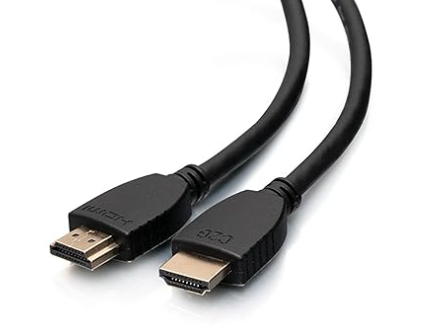HDMI (High-Definition Multimedia Interface) cables are essential components in modern home entertainment and computing setups. Whether you're connecting a TV, computer, gaming console, or any other HDMI-enabled device, choosing the right HDMI cable is crucial to ensure optimal audio and video quality. This comprehensive guide will help you make an informed decision when selecting the correct HDMI cable for your needs.
Table of Contents
- Understanding HDMI Versions
- Types of HDMI Cables
- Length Matters
- High-Speed vs. Standard HDMI Cables
- HDMI Cable Connectors
- Consider Future-Proofing
- Price vs. Quality
- Common HDMI Cable Myths
- Final Thoughts
1. Understanding HDMI Versions
HDMI technology has evolved over the years, resulting in different versions of HDMI cables. These versions determine the cable's capabilities, including maximum resolution, refresh rate, and supported features. The most common HDMI versions are:
- HDMI 1.4: Supports Full HD (1080p) resolution and 3D content.
- HDMI 2.0: Supports 4K resolution at 60Hz and High Dynamic Range (HDR).
- HDMI 2.1: Designed for 8K resolution, 120Hz refresh rates, Variable Refresh Rate (VRR), and more advanced features.
Ensure that the HDMI cable you choose is compatible with your equipment's HDMI version.
2. Types of HDMI Cables
There are several types of HDMI cables, each designed for specific purposes:
- Standard HDMI Cable: Suitable for most home entertainment devices, including HDTVs, DVD players, and gaming consoles.
- High-Speed HDMI Cable: Necessary for 4K, 8K, and HDR content delivery.
- HDMI with Ethernet: Includes an additional Ethernet channel for internet connectivity between HDMI-connected devices.
- Active HDMI Cable: Used for longer cable runs (typically over 25 feet) as they have built-in signal boosters.
- Slim HDMI Cable: Ideal for tight spaces due to their compact design.
Select the type that suits your particular setup and requirements.
3. Length Matters
The length of your HDMI cable affects signal quality. In general, shorter cables are less prone to signal degradation than longer ones. If possible, measure the distance between your devices and choose a cable that matches or slightly exceeds that length.
4. High-Speed vs. Standard HDMI Cables
For most modern devices, it's advisable to opt for high-speed HDMI cables, even if you don't currently require 4K or 8K resolutions. High-speed cables are backward compatible with standard HDMI devices and offer better performance and future-proofing.
5. HDMI Cable Connectors
HDMI cables have different types of connectors:
- Type A (Standard): Found on most HDMI cables.
- Type C (Mini HDMI): Smaller connectors used in some cameras and tablets.
- Type D (Micro HDMI): The smallest HDMI connectors, also used in portable devices.
Ensure your cable has the correct connectors for your devices.
6. Consider Future-Proofing
Investing in HDMI cables that exceed your current needs can save you from having to replace them when you upgrade your equipment. HDMI 2.1 cables are an excellent choice for future-proofing, especially if you plan to upgrade to 4K, 8K, or higher-resolution displays.
7. Price vs. Quality
Price doesn't always equate to quality when it comes to HDMI cables. Expensive cables may offer no tangible benefits over more affordable ones. Look for reputable brands and read reviews to gauge the quality of a cable.
8. Common HDMI Cable Myths
Avoid falling for common HDMI cable myths, such as the need for gold-plated connectors or excessively expensive cables. These features don't significantly impact performance.
9. Final Thoughts
Selecting the correct HDMI cable doesn't have to be a daunting task. Consider your specific needs, the HDMI versions of your devices, cable length, and quality. By following this guide, you can confidently choose the right HDMI cable for your home entertainment and computing setup, ensuring the best possible audio and video experience.

